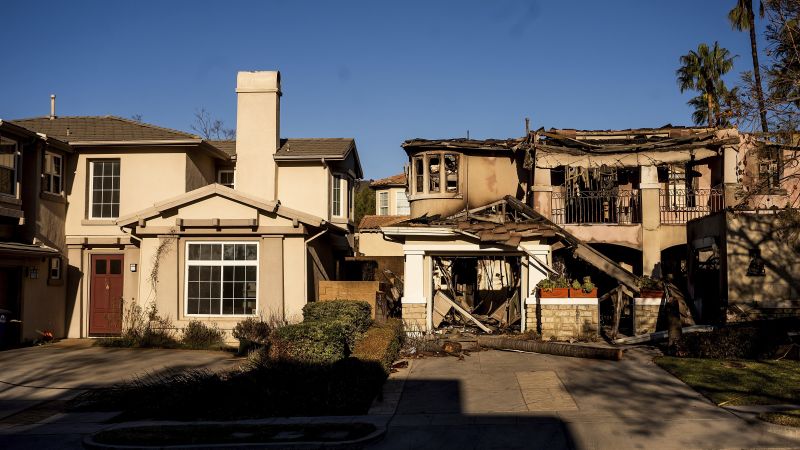Sitting in the hotel room where his family sheltered from the Eaton Fire, Eric Martin was certain his Altadena, California, house – the place he’d once believed his 1- and 3-year-old sons would know as their childhood home – was gone. When a friend sent him a photo of the house still standing, he and his wife held each other, stunned, crying discreetly to not alarm their boys.
As many as 12,000 homes, businesses, and other structures may have been destroyed in the wildfires raging in Los Angeles County, rendering entire communities ashen piles of rubble. But here and there, amid the Palisades and Eaton fires, in places not protected by the private fire crews of the wealthy, a home survived – an apparent miracle – raising questions about how one structure can make it through while others within shouting distance burn to the ground.
While it may be impossible ever to know for sure, several variables could be in play for those homes that survive, experts say: a smart, fire-resilient design; an owner’s preparation, like clearing away flammable vegetation; the sometimes-unknown intervention of firefighters; the wind and weather; or, frankly, luck.
Architect Greg Chasen believes a number of these features helped save a home he designed and helped build just last year that survived the Palisades Fire. The home’s walls were fire-rated for one hour, meaning a fire could be adjacent to the wall for that length of time without igniting. The roof was made of non-combustible materials, and the deck’s finish was also non-combustible.
The tempered, multi-pane glass windows were also a “huge part of the equation,” Chasen said. The sole damage to the home was to two of the exterior panes – one cracked, while the other below it shattered entirely. But the interior panes held, Chasen said, preventing sparks from entering the home, where the furniture could have fueled the fire.
In California, adding wildfire safety measures beyond building codes can boost new home construction costs by 2% to 13%, according to a report from the Insurance Institute for Business and Home Safety. Reinforcing existing homes can vary and likely ranges from $2,000 to $15,000, while full hardening could cost as much as $100,000, according to Headwaters Economics, an independent, nonprofit research group.
Chasen also credited the owner for taking steps to prepare the home. Its landscaping was already spare, the architect said, but as the fire approached, the owner spent hours cleaning the grounds. For instance, he propped open a wooden gate attached to the house, which could have acted as a “fuse” if the fence caught fire, Chasen said. Trash and an outdoor barbecue were also kept away from the home.
This is called creating a “defensible space” around the home, said Coen: a buffer zone cleared of flammable materials, like the dry vegetation that has helped exacerbate this round of Southern California’s fires. Creating this “defensible space,” she said, gives a home a higher probability of survival by reducing sources of “radiant heat” directly on a home.
Firefighters look for these elements, Coen noted. And they make decisions about which homes might be more defensible than others and thus worthy of the resources necessary to save them. But there’s often no evidence of whether a first responder worked to defend a home, said Alexander Maranghides, the senior technical lead of the wildland urban interface group for the National Institute of Standards and Technology.
Indeed, nailing down why a home survived can take an in-depth, yearslong investigation and reconstruction of the type Maranghides’ team conducts, he said, pushing back on the idea of a “miracle home.” “It’s not a miracle, it’s just we don’t know,” he said. “Was it luck? Was it the wind? Was it the wind and the defensive action? What happened? You cannot say because you don’t know.”

